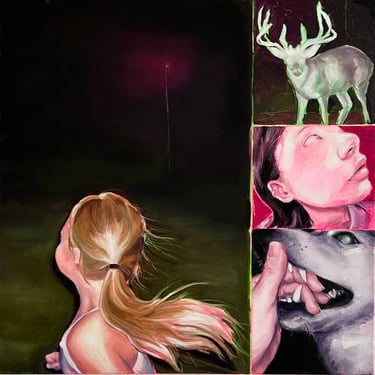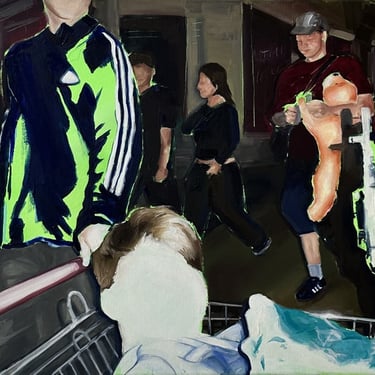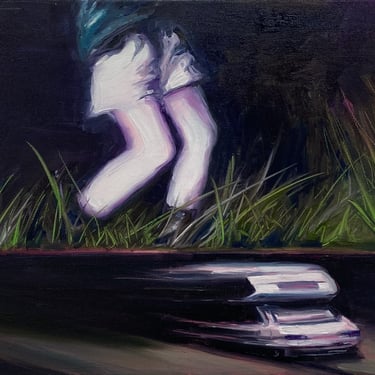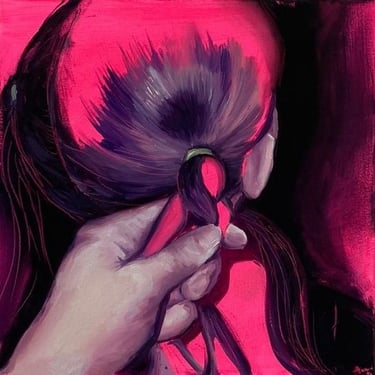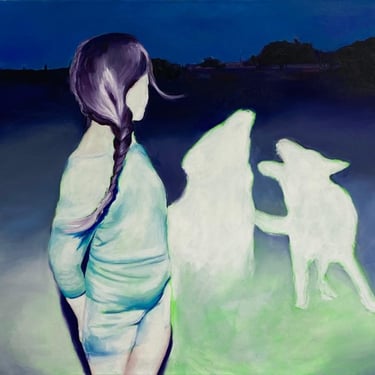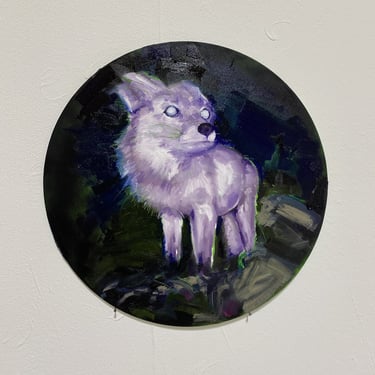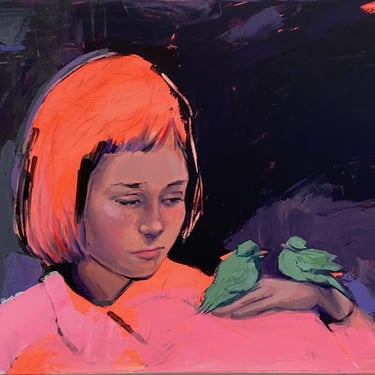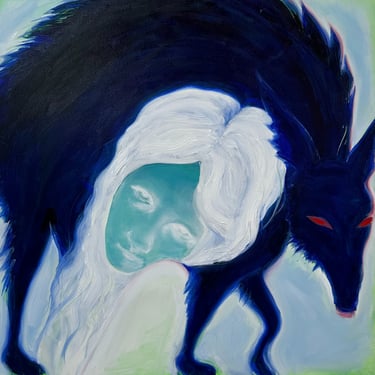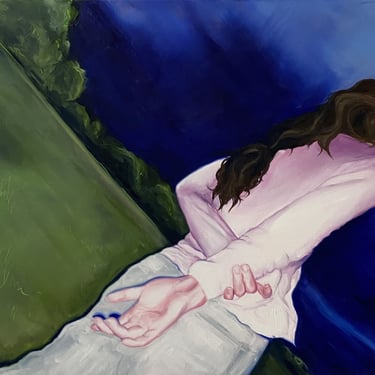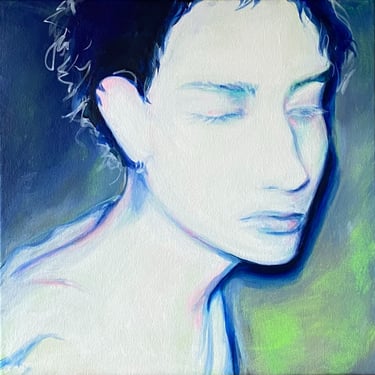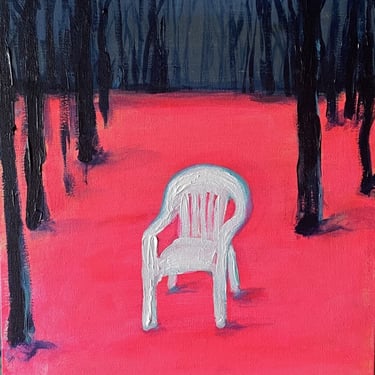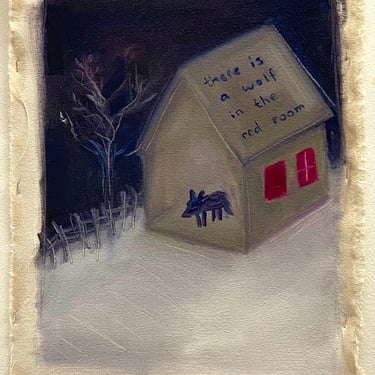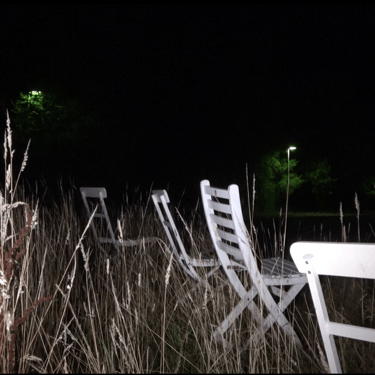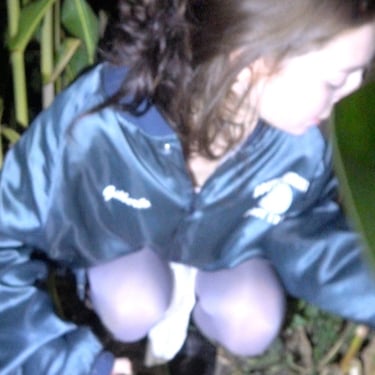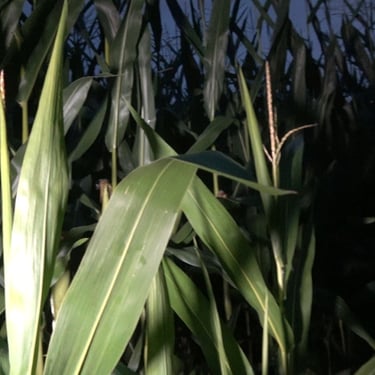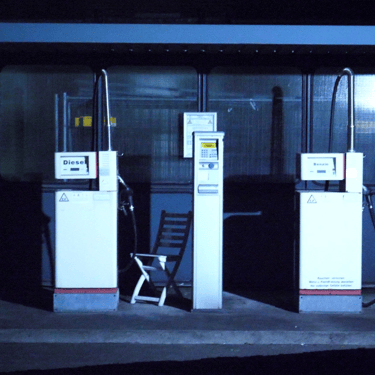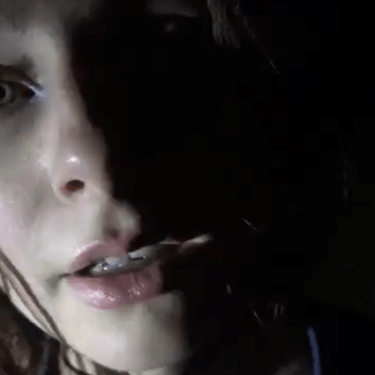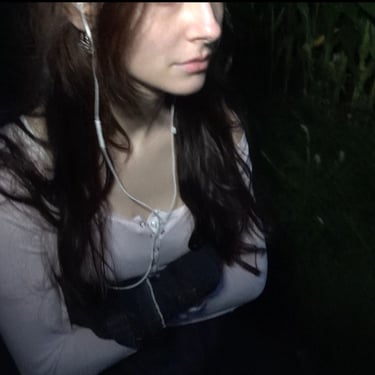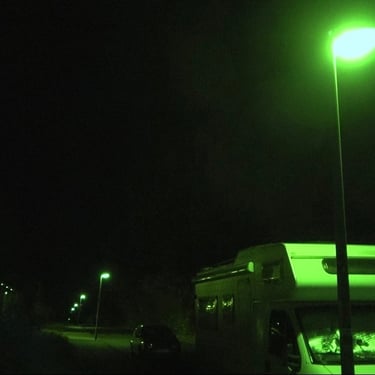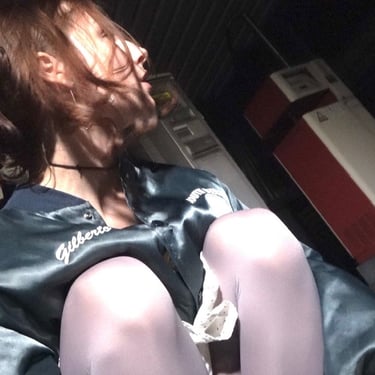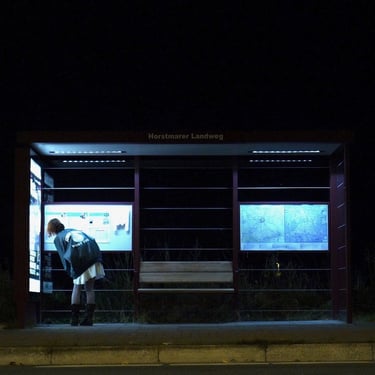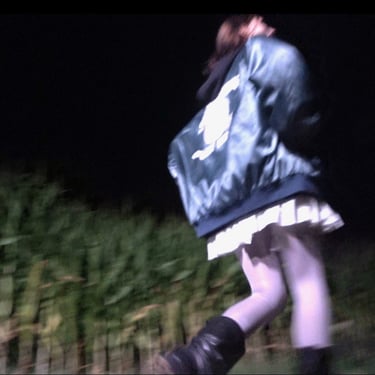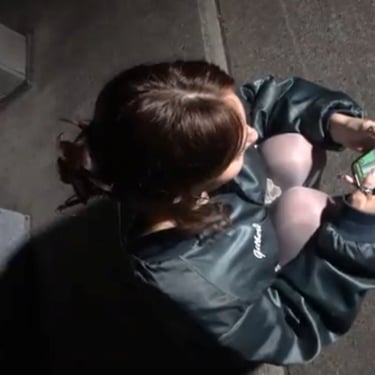My recent work, in both painting and film, engages with feminist psychoanalytic theory, particularly Julia Kristeva’s concept of abjection. According to Kristeva, abjection destabilizes the fragile boundaries of human identity by blurring binaries of life and death, self and other, inside and outside, memory and illusion, gender and sex. It confronts the stable sense of self by simultaneously repelling and being fascinated by what threatens it. Although wanting to reject it, abjection is inescapable as it is inherent in oneself (Kristeva, 2018).
Within this framework, I explore female memory and intuition as states suspended between trust and illusion. For me, memory, especially female memory, is inherently linked to trust. Women´s trust, often dismissed as naive, becomes a vessel for deeper questions: I explore how memories in women’s lives can be distorted, suppressed, romanticized, or rewritten by reinterpreting feminist, mythological, internet and pop-cultural narratives, where I reference literature such as "Women Who Run With the Wolves" (Pinkola, 1992), the Bluebeard fairy tale/ "The Bloodchamber" (Carter, 1979), "The Company of Wolves" (Jordan, 1984) as well as contemporary online debates as in “Man or Bear” or "The immortal snail" and gothic concepts such as the red room trope or abjection. I weave these influences together with both personal and collective experiences and interpretations surrounding nostalgia, memory, (emotional) abuse, interdependence, deception, illusion, curiosity, and danger.
My work often depicts young women and wild animals, such as wolves, in ambiguous landscapes - places hovering between safety and threat, curiosity and naivety, past and present, memory and imagination, running and hiding. The protagonist exists in a state of uncertainty, neither fully within nor entirely outside their fragmented environments. Many of my paintings are about the simultaneous urge to resist and to nurture a potential threat. It expresses the internal conflict between trusting one’s own memories and instincts, or the stories one was told, and the urge to flee, return, hide, dream, remember, forget, miss, or regret. Ultimately, my work creates a space of emotional ambiguity, a place where nostalgia can hide, fear can feel familiar, and memory becomes a living, shifting, and uncanny narrative.
My process often begins with photographs, videoworks or short films I made, from which I extract and edit film stills, becoming the foundation for my paintings. Cinema plays a major role in shaping my visual ideas, as well as the aesthetics of the “poor image” (Steyerl, 2009). I am drawn to unconventional perspectives as in wide-angle, yet intimate views, slanted horizons, stretched compositions and split screens.

